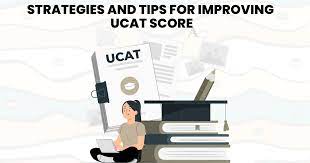Direction is the most up to date segment of the UCAT. It was acquainted in 2017 with supplanting a more seasoned comparably named segment called “choice examination”. The abilities tried remain comprehensively something very similar, however the inquiry style and timings have changed. This article will frame with 10 keys methods for beating this difficult and acing this part for UCAT Practice Tests achievement.
1. Dynamic Method Is Vital
The dynamic inquiry arrangement can appear to be confused. Anyway by foundationally applying explicit methods to each address type you can separate the segment into something more sensible. Direction has an enormous number of various inquiry types including arguments, likelihood and Venn graph inquiries among others. Ensure you have nailed your strategy for every one of these inquiry types with the goal that you have a set methodology to follow.
For instance logic questions can appear to be a mix of confounding words from the outset. We prescribe utilizing a Venn chart strategy to envision the assertions and produce an unmistakable graph from which you can certainly choose the right response.
2. Balance Dynamic Inquiry Types
There are six different inquiry types in this UCAT segment. In this way, you should have invested energy rehearsing each sort. Each question type has various procedures and furthermore timing tips connected to them. You want to have invested energy in every one to get familiar with these.
Arguments
You are given at least two proclamations and need to utilize intelligent thinking to conclude what ends follow. You will be given 5 ends to assess.
Venn Outlines
You might be given a bunch of explanations or a bunch of various Venn outlines as reaction choices.
Probabilistic Thinking
Select the most ideal reaction for an inquiry connecting with likelihood.
Consistent Riddles
Given a progression of proclamations and realities and have to gather data from this.
Deciphering Data
Find which end best follows a contention.
Perceiving Suspicions
Test your capacity to assess major areas of strength for how contention is in help possibly in support of an answer for a specific issue.
Direction is one of the least time forced subsections, but timing is still close! Some inquiry types will generally take more time than others. By rehearsing each question you will get a vibe of how long you ought to spend on each sort to finish the segment in a lot of time.
This likewise intends that there will be no curve balls on test day. In the event that you find a specific inquiry type you battle with you can devote time to rehearsing it. It might try and be the situation that you could profit from outer assistance. In which case our balanced coaches can give you assistance that can be customized to your careful requirements.
3. Commit Note Of Your Errors
While rehearsing UCAT dynamic make a point to gather a rundown of all the different inquiry types you experience. Not exclusively will this permit you to ensure you have great measures of each, yet as you go through you can count how frequently you commit errors on each question type.
UCAT navigation has many sub-points and this is a valuable method for starting to structure your update, permitting you to recognize and zero in on your more fragile regions. Recollect to not disregard the inquiries you see as especially hard, as this is the region you can attempt to move along!
4. Practice Venn Charts
Venn charts are a significant piece of UCAT navigation. They are key for both the logic and Venn graph question types. Working on drawing them will get you used to how they work and ensure you can with certainty apply them to these two different inquiry types.
With regards to the test day, despite the fact that it could call for additional time at first, it will imply that you can arrive at decisions about the logic proclamations rapidly and precisely. Make certain to watch out for the clock while rehearsing as the need might arise to have a harsh thought of what amount of time it is requiring for you so as not to use up all available time.
5. Try Not To Make Suppositions
Try not to derive or fill in holes with your very own insight for deciphering data questions. Guarantee the end you pick is just in light of what the text has given you versus what you buy and by expect. On the off chance that it isn’t unequivocally expressed in the text given, then, at that point, don’t consider that your last decision.
6. Peruse The Inquiry Gradually
Abstain from hurrying through the inquiry and simply selecting catchphrases as you might do in other UCAT segments. In Navigation frequently words, for example, “must” and “or” are utilize in the inquiry, which you might miss assuming that you read excessively quickly so take as much time as is need to guarantee your pick the right response.
7. Arrange Your Considerations On Paper
In Dynamic inquiries you will frequently be give a great deal of data with numerous things reference e.g names, colors, places. Attempting to figure out this large number of snippets of data in your mind can be very overpowering and make it simple to neglect key snippets of data. Have opportunity and energy in this segment to arrange your considerations on paper to guarantee that you can get to the right response. Guarantee you work your manner of thinking out flawlessly so you follow it effectively so you can really take a look at your work.
8. Guarantee To Severe With Time
Direction expects you to travel through the inquiries at a pace of around one inquiry each moment. This might appear to be liberal contrast with different segments, however it is extremely simple to fall into the snare of becoming involved with an inquiry. You have 29 inquiries that should be address quickly so watch out for the clock while responding to questions.
A portion of the inquiries are intriguing and attempting to calculate your direction through the issues can be very fulfilling. In any case, be cautious, this can bring about you squandering an excessive amount of energy on one inquiry and may keep you from wrapping up. As a matter of fact a portion of the sensible riddles intended to be unsolvable intentionally! This has been finish deliberately to punish understudies who spend longer attempting to address the total riddle, even after they’ve worked out the right solution to the assertion. So generally speaking, it is basic to be severe with yourself during this part.
9. Spatial Conditions
Spatial conditions are another inquiry type that can be rearrange. In the event that you treat each shape a letter it will permit you to proficiently work out and tackle these kinds of inquiries significantly more. Contemplate a portion of the fundamental variable based math control you learnt at optional school and how you could apply this to figure out a few obscure qualities in the proclamations. You can then use the time saved money on this question type on a portion of the more complicated tedious ones.
10. Do Whatever It Takes Not To Signal Excessively
While it is significant not to find out the latest on precarious inquiries and to continue on when you stall out. It is likewise significant not to leave any inquiries unanswered when you banner them. Recollect that the UCAT isn’t adversely check so there is no mischief in speculating in the event that you don’t have a clue about the response.
With Dynamic it is one situation for every inquiry, dissimilar to Verbal Thinking for instance where a bunch of different inquiries will all connect with a similar section. Thus, it is very hard to return toward the end and once again acclimate yourself with the inquiry. In this way, attempt to address the inquiry for the last time when you‘re really making it happen.



